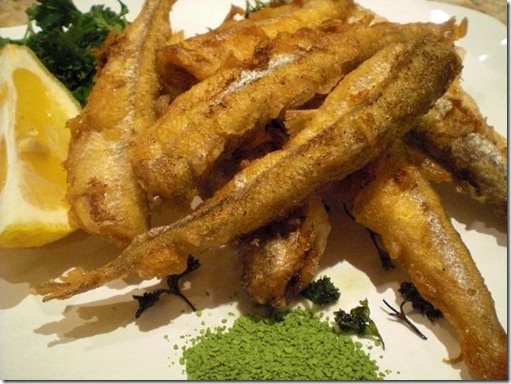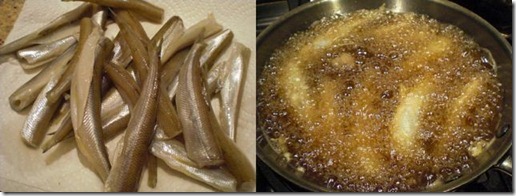This is a rather standard Japanese hotpot dish with monkfish. It is perfect for a cold winter’s night. In Japan, you can buy a
package of Monkfish for “nabe” . The package usually contains monkfish meat, some with skin attached, bone -for broth-, other innards and the most important item, the liver.
In an authentic ankou nabe, at least, the liver must be included. The only Monkfish I can get here, however, is a fillet or the tail meat. In terms of seasoning, for the nabe you can season it with soy sauce or miso. Sometimes people use both soy sauce and miso. This time I decided to make a soy sauce flavored “ankou” nabe.
More about Monkfish: Japanese eat almost all parts of the monkfish with the liver being the most valued and cherished ("
ankimo" あん肝). So-called "Seven tools of Monkfish" or "Nanatsu dogu" 七つ道具 include: 1. liver, 2. tail and ventral fins, 3. gills (!!), 4. ovaries, 5. stomach, 6. skin, and 7. tail meat. By the way, we only eat female monkfish. The male is tiny-winy and not worth considering for food.

Broth: I used a combination of kelp and dashi pack with “iriko” いりこ or “niboshi” 煮,干small dried fish, to make a broth. A combination of kelp and bonito flakes is also good. I started with cold water (about 4 cups) and placed a 2x3 inch rectangle of kelp and one dashi pack and simmered it for 10 minutes before removing them.
I added mirin and soy sauce (1:2 ratio) as I tasted but I could have added either salt or more soy sauce. If you do not like a dark colored sauce you could use a combination of salt and light colored soy sauce or 薄口醤油.
In addition to the fish, you could use whatever vegetables or tofu you like. I used nappa cabbage or “hakusai” 白菜, threads of devil’s tongue* or “shirataki” 白滝 (see below for additional preparation), tofu, fresh shiitake mushrooms and snap peas.
(*"Shirataki" preparation: After removing from the package, I washed it in cold running water and then parboiled it. I drained it before putting into the nabe. This is important since it has a peculiar smell which is not particularly pleasant).
Monkfish: I used a bit less than 1 lb of monkfish fillet. I removed the slimy membrane and cut into large bite size pieces. If you use bone, skin or other parts of the monkfish (especially innards), you may have to pour hot water over the pieces to remove any fishiness but for the tail meat, it was not needed.

Instead of cooking the nabe at the table, I cooked this nabe on the stove. I added vegetables and devil's tongue threads and put on the lid. After a few minutes, when the vegetables are almost done I added tofu and then the Monkfish. It only takes few minutes for the fish to cook.
I served the nabe in individual bowls with some broth. As condiments, I served small wedges of lemon (since I did not have “yuzu” ゆず), finely chopped scallion, Japanese red pepper flakes or ichimi tougarashi 一味唐辛子. Hot sake may be the usual choice for libation but we had cold sake.



















